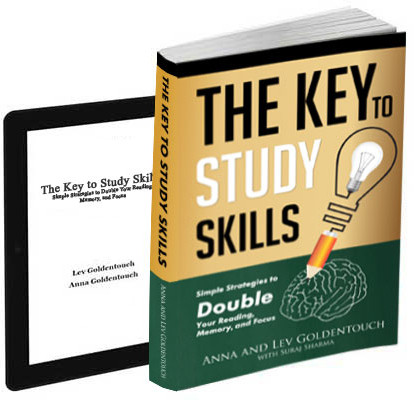When we talk about retention, we’re referring to how much detail we can recall after reading an article. Comprehension and retention often intertwine, yet they serve different purposes. While comprehension ensures we understand the material, retention ensures we can use it when needed. A helpful breakdown of these two skills is explored further in this article on comprehension vs retention, which is well worth a read if you’re looking to strengthen your memory skills. Learning to absorb what we read is often considered part of an advanced learning system, but it’s equally beneficial for beginners. Foundational skills, when practiced early, support long-term learning growth. This is exactly why applying core memory techniques—like those found in the KeyToStudy Memory Masterclass—can help you internalize information with greater confidence.
The Difference Between Reading to Learn and Reading to Retain
At times, we read not to retain every detail, but to learn something new. There’s a big difference between information and knowledge. Knowledge arises not just from facts but from the connections we form between those facts. Over time, these connections—or mental links—become more crucial than the facts themselves. Try forming several links per marker, using specific aspects of a detail as anchor points. This builds context around what you’re learning, leading to stronger memory formation.
Many of us confuse simply reading with actual learning. Passive reading offers little return in terms of long-term benefit. On the other hand, active reading requires deliberate engagement with the material, asking questions, summarizing content, and linking ideas together. Active engagement allows us to form mental pathways that we can revisit later. Without these pathways, the information we consume quickly fades away.
Consider the concept of long-term retention through repetition. Memory is strengthened by regular revisiting of material. The principle of spaced repetition, highlighted in this article, emphasizes reviewing content at increasing intervals to reinforce memory and deepen understanding. Spaced repetition isn’t just a technique for remembering; it’s a way to build solid knowledge foundations.
Building Knowledge Through Connection
Articles, in most cases, are not isolated puzzles that exist on their own. Rather, they often relate to our prior knowledge. As the saying in Kabbalah goes, “only God creates something from nothing.” The rest of us rely on existing structures. These prior experiences and references are essential to help us create deeper connections as we learn. Be mindful of how the current content ties into what you already know, because this is where learning becomes meaningful.
When reading something new, ask yourself:
- How does this connect to what I already know?
- What are the implications of this information?
- Can I apply this knowledge in a new context?
The more we ask these questions, the stronger our comprehension and retention will be. Knowledge becomes truly meaningful when we apply it in different situations. Without these connections, knowledge becomes disjointed and difficult to retrieve when needed.
This is why many memory experts emphasize concept mapping and visualization. These tools encourage active participation in learning. By visually representing relationships between ideas, you engage both the logical and creative aspects of your brain, leading to better integration of information.
Avoiding Gaps in Understanding
It’s incredibly easy to miss something important while reading. I experience this just as often as anyone else. The key difference is that I’m acutely aware of this shortcoming, so I tend to be more cautious with the information I take in. I cross-check details, analyze the unique viewpoint of the author, and compare it with other resources. Even then, if the article is significant to me, I’ll ask friends, especially those who share similar interests, to read it too. Discussing ideas leads to new insights, and it’s fascinating how varied our interpretations can be.
No matter how well-written an article is, it won’t resonate with every reader the same way. That’s why dialogue around ideas is so valuable. Multiple interpretations lead toa broader understanding. This habit of verifying, reflecting, and discussing is especially useful when you’re engaging with material that’s dense or deeply analytical.
To ensure you aren’t skipping critical points:
- Reread key sections.
- Highlight or annotate areas that seem new or unclear.
- Compare summaries of similar articles.
- Discuss the content with peers or study groups.
These strategies reinforce both comprehension and retention, building a robust framework for learning.
Making Learning Practical and Reflective
The practical application of what you read is just as important as reading itself. I often use articles in conversations, during breaks, or as starting points for self-reflection. Reflection allows me to look at the topic from different angles, fostering originality in thought. Every once in a while, this process leads to genuine discoveries. When something sparks interest, I jot it down. The act of writing significantly boosts retention.
However, be selective—writing is slower than thinking and best used for content that truly matters. This technique of daily reflection is not only time-tested but also backed by science. Business Insider cites a 15-minute daily reflection activity as a way to significantly boost productivity and learning outcomes.
Making reflection a ritual can lead to significant gains in focus and clarity. Start with short reflections:
- What did I learn today?
- How did it connect to previous knowledge?
- What actions can I take based on what I read?
This mindful process gradually strengthens both your memory and understanding. It also boosts creativity and emotional engagement with learning, making the experience more enjoyable and rewarding.
Writing to Enhance Memory
Writing is an act of synthesis. It forces you to organize your thoughts, clarify your understanding, and communicate effectively. When you write about what you’ve learned, you’re essentially teaching it to yourself again.
Even simple notes can create strong memory cues. Use outlines, diagrams, and summaries to visualize what you’ve absorbed. While writing, focus on the parts of the content that sparked curiosity or generated questions. These are indicators of deeper engagement and interest.
If your note-taking feels too slow, consider experimenting with tools like voice-to-text transcription, mind mapping software, or flashcard apps. These can supplement traditional writing and reduce the time burden while maintaining the retention benefits.
Integrating writing into your learning process doesn’t have to be a chore. It can be as brief as a sentence or as long as a blog post—what matters is that you actively recall and process the information.
Reinforcing Memory with Repetition and Spacing
Long-term retention depends on consistent and intelligent review. Memory degrades over time, but periodic reinforcement can reverse that process. The idea isn’t to memorize word-for-word but to review key ideas until they become second nature.
Spaced repetition is particularly effective because it leverages the brain’s natural forgetting curve. By reviewing content just before you forget it, you force your brain to work harder to retrieve it, which strengthens the memory trace.
Tools like Anki, Quizlet, or even a manual flashcard system can help you implement spaced repetition. Divide content into manageable chunks, and schedule reviews at increasing intervals: 1 day, 3 days, 7 days, and so on. As you revisit the content, adjust your intervals based on how easily you recall the material.
The deeper your initial processing of the material, the fewer repetitions you’ll need. That’s why combining spaced repetition with active learning and reflection is such a powerful strategy.
Joining a Learning Community
Learning is not a solitary endeavor. Surrounding yourself with like-minded individuals can drastically enhance your motivation and understanding. When you share what you know, receive feedback, and ask questions, you accelerate your learning curve.
One great way to stay connected is by following our Facebook page, where you’ll find memory tips, updates, and community discussions. This is an excellent resource if you’re looking to stay updated or deepen your knowledge in a supportive space.
Community learning fosters accountability and consistent engagement. It also allows for exposure to different viewpoints and learning strategies. Whether it’s an online course, a discussion forum, or a mastermind group, having others on the same journey as you can be incredibly motivating.
Final Thoughts: Knowledge Through Reflection
Ultimately, knowledge is built through constant reflection and connection. Don’t take information at face value. Examine it, question it, and figure out how it fits into your current framework. These efforts will help transform raw data into lasting insights.
Reading for retention and analysis isn’t just about remembering more—it’s about understanding deeply and using that understanding in real life. Mastering these techniques takes time, but the investment is worth it. Start with one habit: daily reflection, spaced repetition, or active note-taking—and build from there.

Get 4 Free Sample Chapters of the Key To Study Book
Get access to advanced training, and a selection of free apps to train your reading speed and visual memory

